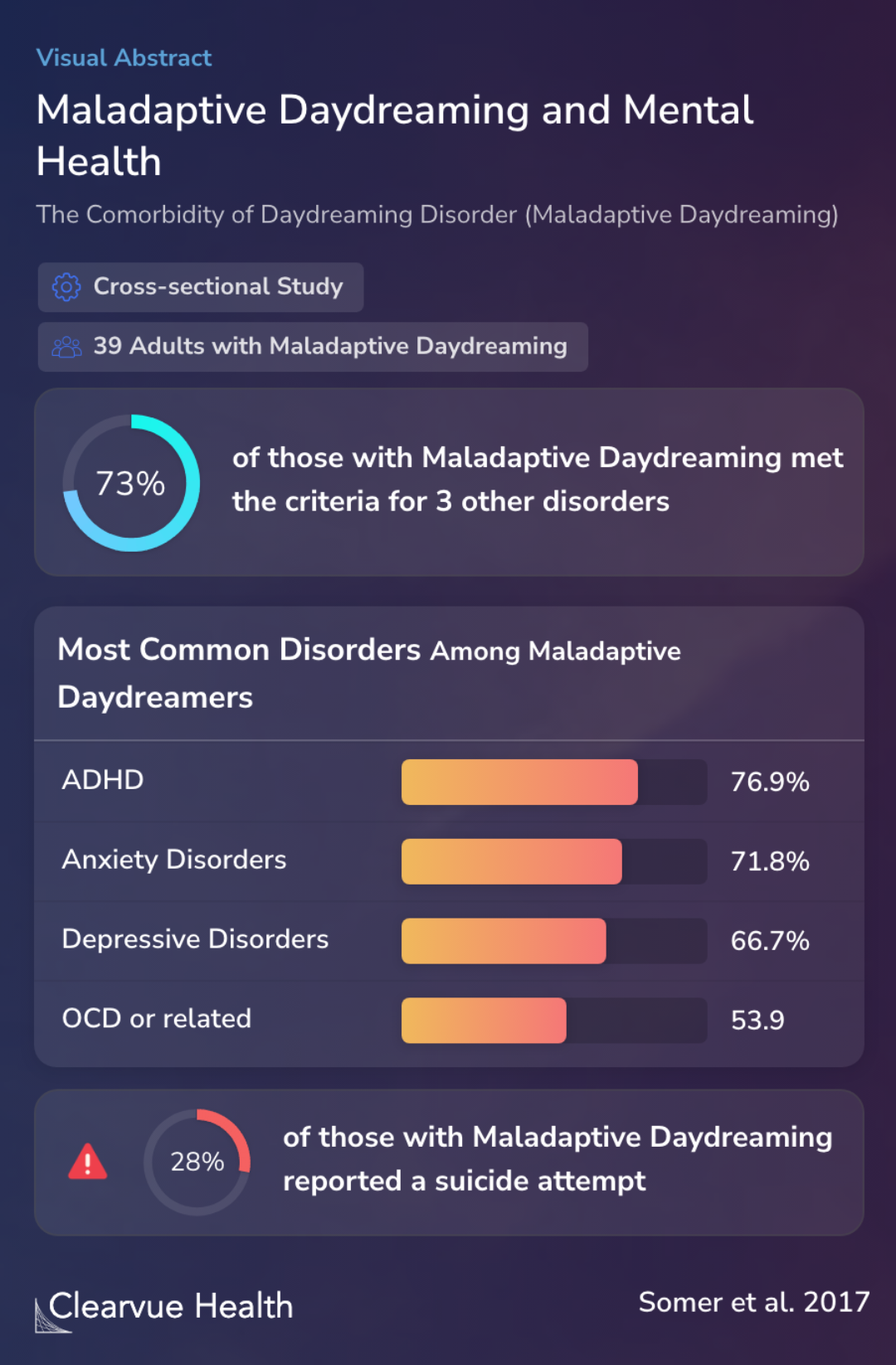The Comorbidity of Daydreaming Disorder (Maladaptive Daydreaming)
Maladaptive Daydreaming and Mental Health
Eli Somer , Nirit Soffer-Dudek, Colin A Ross

Objectives
While it is entirely normal to daydream, some people can daydream so much that it gets in the way of everyday life. Some experts have proposed a condition called maladaptive daydreaming that covers individuals who daydream to a point where it causes dysfunction and distress.
This study wanted to understand more about maladaptive daydreaming, particularly whether those with maladaptive daydreaming also have other conditions.
ADHD has often been associated with maladaptive daydreaming. The study specifically analyzed how closely linked ADHD was to maladaptive daydreaming.
To determine the comorbidity profile of individuals meeting criteria for a proposed new disorder
Methods
Researchers conducted a structured interview with 39 individuals who appeared to meet the criteria for maladaptive daydreaming. This interview was designed to estimate how many of them potentially had other mental health disorders.
Daydreaming disorder (more commonly known as maladaptive daydreaming [MD]), the Structured Clinical Interview for Diagnostic and Statistical Manual of Mental Disorders, Fifth Edition (DSM-5) and the Structured Clinical Interview for DSM-IV Dissociative Disorders were administered to 39 p...
Results
Most of those with maladaptive daydreaming also had at least three other psychiatric disorders.
The most common disorder found was ADHD, followed closely by anxiety disorders.
These data suggest that maladaptive daydreaming can indicate poor mental health. Over 28% of those who met the criteria for maladaptive daydreaming reported a suicide attempt.
We determined high rates of comorbidity: 74.4% met criteria for more than three additional disorders, and 41.1% met criteria for more than four. The most frequent comorbid disorder was attention deficit hyperactivity disorder (76.9%); 71.8% met criteria for an anxiety disorder, 66.7% for...
Conclusions
These results provide evidence that, in some cases, daydreaming can be a sign of something harmful. The individuals in the study who had met the criteria for maladaptive daydreaming had experienced mental health issues, distress, and even suicide attempts.
This study is consistent with previous studies that have linked maladaptive daydreaming to ADHD. But, as shown in other studies as well, it appears to be a separate condition in many cases.
This finding provides evidence that MD is different than normal daydreaming and that these individuals experience considerable distress and impairment.